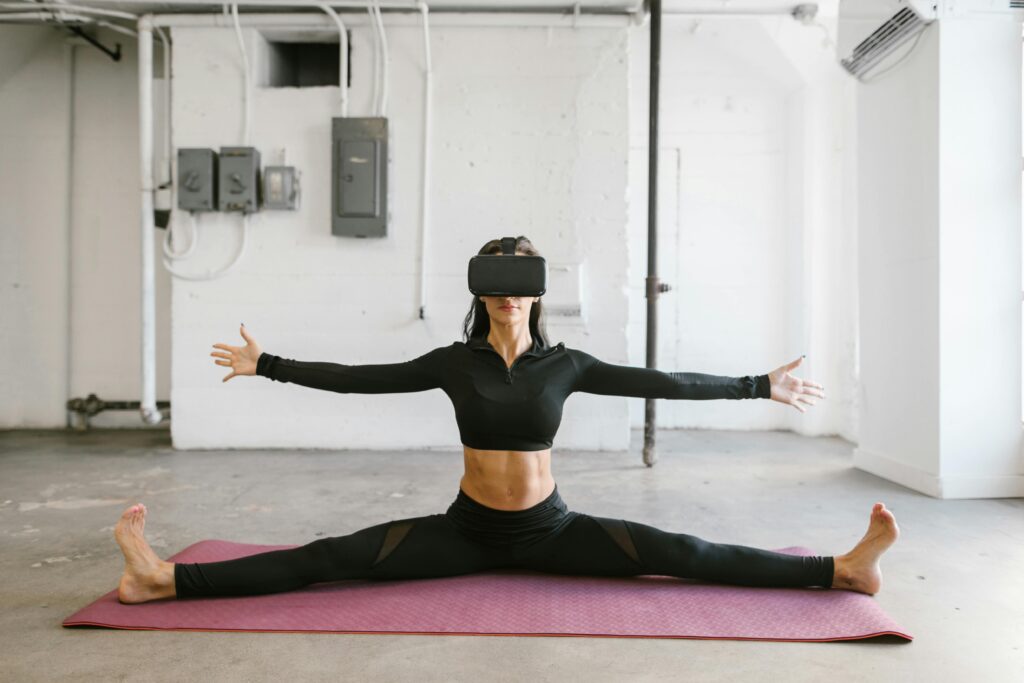Yoga isn’t just about stretching, deep breaths, and getting a good sweat in—it’s something deeper, a mix of movement and mindfulness that connects body and mind. But like everything else, it’s evolving. AI yoga teachers, virtual classes, and high-tech gear are shaking things up in ways no one expected. Some people love it. Others? Not so sure.
Can artificial intelligence really replace the intuition of a real instructor? Does practicing through a screen take away from yoga’s essence? The debate is definitely on. Where do you stand?
AI Steps Onto the Mat: What’s Changing?
For anyone who’s struggled to stick to in-person classes or just wanted a little more personal attention at home, AI might be the answer. It’s not just pre-recorded videos or generic workout apps anymore. AI-powered yoga platforms now track your movements in real time, adjusting and correcting as you go. Some even modify future sessions based on how you performed before, offering a level of customization that traditional classes can’t always match.
Real-Time Feedback Like Never Before
Unlike old-school workout videos, AI-driven systems use motion tracking and machine learning to analyze your form, breathing, and movement—almost like having a live instructor checking your poses. If something’s off, AI lets you know. Some platforms even take it further, adjusting difficulty levels dynamically based on your progress.
The Boom in AI-Powered Fitness
People are loving this new tech. AI-driven wellness apps saw a 32% increase in user engagement in 2024, showing that more people are open to digital guidance. According to Digital Health Trends, 60% of users who tried AI-assisted workout apps reported improving their posture faster than they did practicing alone. Brands are paying attention, rolling out smart coaching features faster than ever.
The Best AI-Powered Yoga Apps Right Now
Want to see what AI yoga can really do? Here are some of the best apps leading the way:
Yogaia – Uses AI to correct your posture in real-time.
Asana Rebel – Creates personalized yoga and fitness routines based on your goals.
Down Dog – Smart adaptive sequences that adjust in difficulty as you improve.
These apps aren’t here to replace home practice—they’re just making it smarter and way more effective.
Virtual Yoga: The Future or Just a Trend?
Yoga used to mean heading to a physical studio, no way around it. Now? Online classes have changed the game, making yoga more accessible, affordable, and flexible. Whether you prefer live-streamed sessions or on-demand videos, you can now practice with world-class instructors without leaving your home.
What’s the Data Say?
A survey from Global Wellness Insights found that over 70% of yogis prefer a mix of in-person and virtual classes. Since 2020, participation in online yoga has jumped 45%, proving people love the freedom to practice whenever and wherever.
So, Can AI Replace a Yoga Teacher?
Short answer? Not really. AI can tweak your poses in real-time and personalize your practice, but it doesn’t have human intuition or that personal connection. Yoga is about more than just correct form—it’s about energy, mindfulness, and the bond between teacher and student.
Many practitioners believe AI is great as a supplement, not a substitute. It enhances practice but can’t fully take over.

Is Virtual Yoga as Effective as In-Studio Classes?
It depends. Virtual yoga offers customization and consistency, but it lacks hands-on adjustments and that community feel. Still, with the right guidance and motivation, an online class can be just as beneficial. It’s all about how you engage with it.
The Biggest Yoga Tech Trends Right Now
Tech is taking yoga in some interesting directions. Here’s what’s shaking things up:
Wearable Integration – Smartwatches and trackers now sync with yoga apps to monitor breath, heart rate, and posture.
AI Motion Tracking – Cameras and sensors analyze your form and provide corrections in real time.
AR Yoga – Augmented reality brings a virtual teacher right into your space, guiding your poses as if they were really there.
The Downsides of AI Yoga
AI yoga isn’t perfect, and there are some challenges:
- Lack of Human Interaction – No AI can fully replace the experience of a real instructor.
- Tech Limitations – AI still makes mistakes with posture corrections.
- Screen Fatigue – Staring at a screen too long can take away from the mindfulness aspect of yoga.
The Best Way? A Hybrid Approach.
If you can, balance in-person classes with AI-powered sessions at home. That way, you get the hands-on guidance of a real instructor while still benefiting from the convenience of virtual practice.
How to Make the Most of AI Yoga
If you’re thinking about adding AI to your yoga routine, here’s how to do it right:
- Mix virtual and in-person classes for a well-rounded practice.
- Use wearable tech to track progress and improve posture.
- Join online yoga communities to stay motivated and connected.
Is AI the Future of Yoga?
Technology is definitely changing yoga, but it’s not replacing tradition—it’s just making it more accessible. Whether you’re using AI, attending virtual classes, or sticking to in-person sessions, the real key is mindfulness. However you practice, staying present is what truly matters.
Have you tried AI yoga? Drop a comment and share your experience!




Leave A Comment